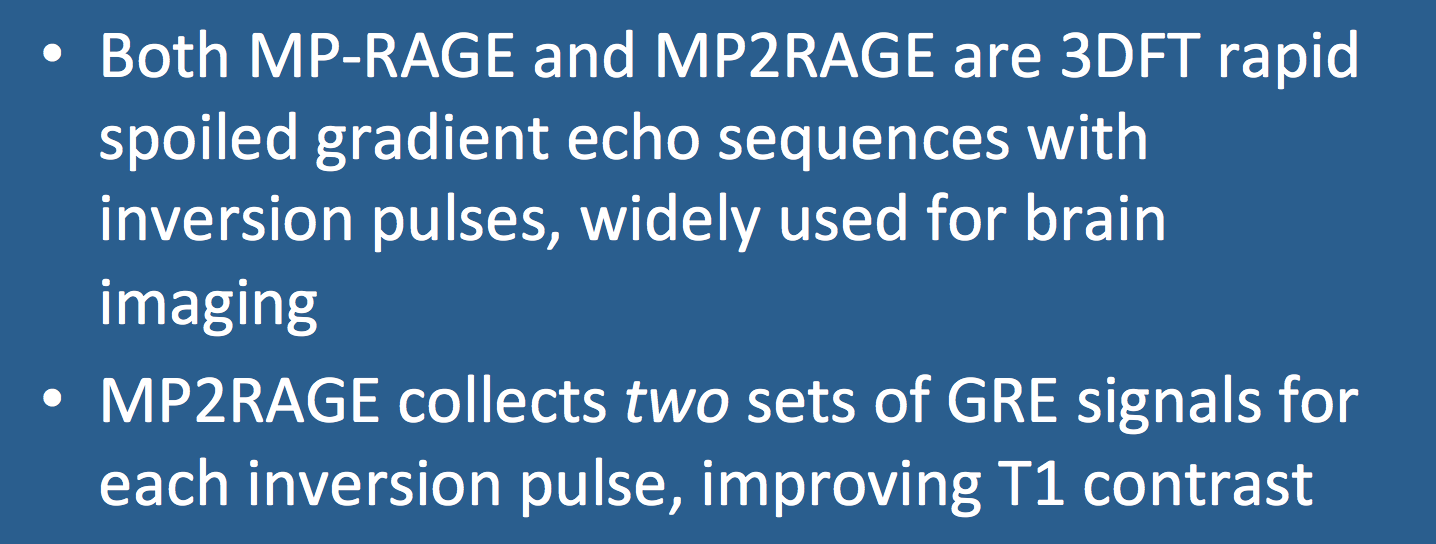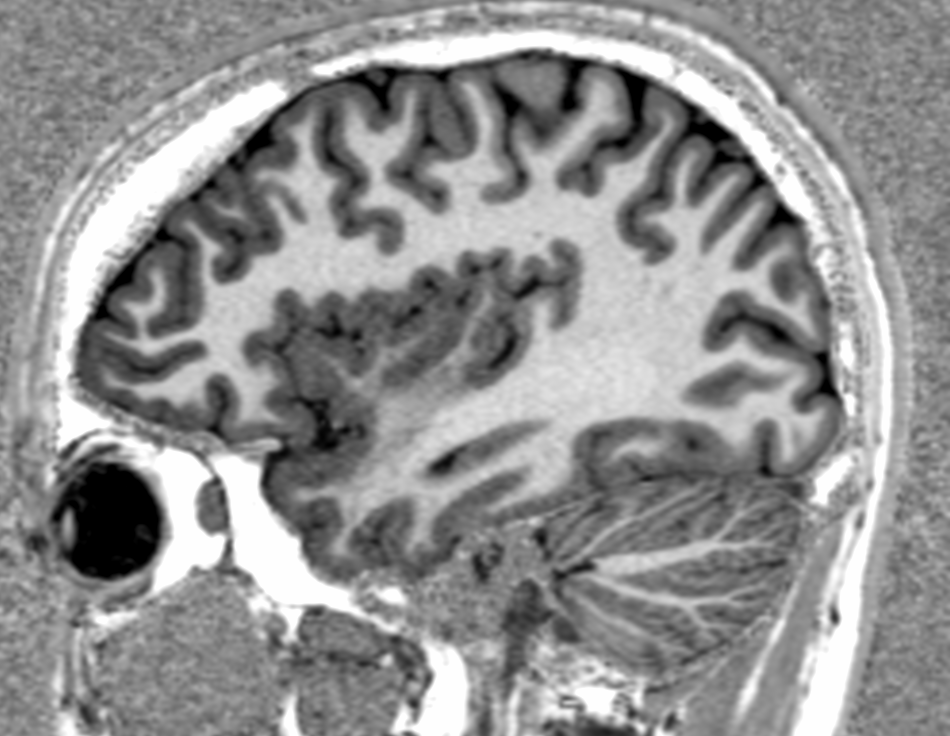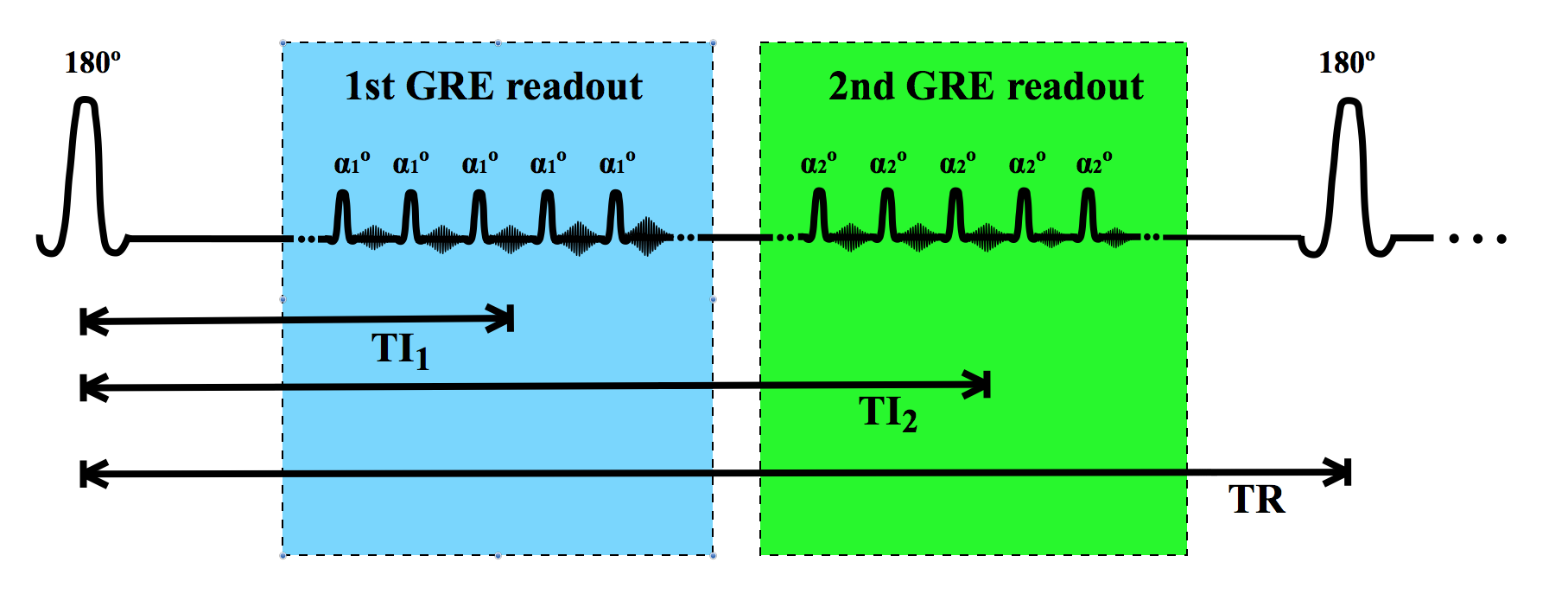The standard Siemens implementation of MP-RAGE is as a 3DFT technique. Following the non-selective 180º pulse, Mz is inverted and allowed to regrow via T1 relaxation mechanisms over inversion time interval (TI), at which time signal is acquired by using a spoiled GRE (“Turbo-FLASH”) with low flip angle.
Sequential ordering is typically used for both in-plane (Gy) and slice-select (Gz) phase encoding. All the (Gz) phase-encoding lines are collected following the inversion pulse, then repeated for the next value of the Gy gradient, and so forth. Because the number of partitions (Gz phase steps) is usually smaller than the number of Gy steps, this strategy results in the shortest scan time. Image contrast is determined by the effective inversion time (TIeff), which is the time between the 180º-pulse and the central Gz phase steps (i.e., kz near 0).
MP-RAGE contrast is determined strongly by T1-contrast, but spin density and T2* effects are also present. Use of high bandwidth and short data collection period reduces susceptibility effects including eddy currents associated with metal. It is widely used in isotropic mode for T1-weighted brain imaging.
Advanced Discussion (show/hide)»
Another variant, called MEMP-(“Multi Echo MP”)-RAGE, uses four echoes between about 2.5 and 7.5 ms, and is being increasingly used for ultra-high field MR imaging.
Comments from my colleague Graeme Bydder:
“With MP2RAGE eventually the long TI acquisition is not proton-density weighted because the authors normalize their short TI and long TI images by dividing the multiplied short TI and long TI images by the sum of the two images. This eliminates proton-density weighting and a lot of/all T2/T2* sequence weighing depending on whether they use the same sequences parameters for each of the short TI and long TI RAGE data collections or not.
The multiplication means that the sequence displays synergistic negative T1-weighting from the short TI and long TI contributions across a broad range of T1s from about those of white matter to about that of CSF.
The FLAWS sequence specifically nulls white matter and CSF, and in its original incarnation multiplied the short TI and long TI images before normalizing them (the UNI variant). In a recent paper (attached) the authors have performed minimum intensity projection and subtractions to combine the short TI and long TI images as well. The later give mildly synergistic T1 sequence weighting over a broad range of T1s. The sequence weighting is reversed in sign by subtracting the two acquisitions in the reverse order.”
Beaumont J, Gambarota G, Saint-Jalmes H, et al. High-resolution multi-T1–weighted contrast and T1 mapping with low B1+ sensitivity using the fluid and white matter suppression (FLAWS) sequence at 7T. Magn Reson Med. 2021;85:1364–1378. [DOI LINK] (Improvements on the MP2RAGE technique suitable for UHF imaging.)
Marques JP, Kober T, Krueger G, et al. MP2RAGE, a self bias-field corrected sequence for improved segmentation and T1-mapping at high field. NeuroImage 2010; 49:1271-1281.
Mugler JP 3rd, Brookeman JR. Rapid three-dimensional T1-weighted MR imaging with the MP-RAGE sequence. J Magn Reson Imaging 1991; 1:561-7.
Tanner M, Bambarota G, Kober T, et al. Fluid and white matter suppression with the MP2RAGE sequence. J Magn Reson Imaging 2012; 35:1063-1070.
What is meant by an "IR-prepped" sequence? How is this different from "standard" inversion recovery?




